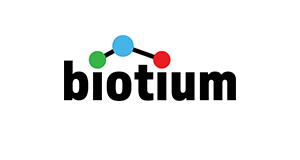PDCD1 / PD1 / CD279 (Programmed Cell Death 1) (PDCD1/1410R), CF740 conjugate, 0.1mg/mL
PDCD1 / PD1 / CD279 (Programmed Cell Death 1) (PDCD1/1410R), CF740 conjugate, 0.1mg/mL
Artikelnummer
BTMBNC741410-500
Verpackungseinheit
500 uL
Hersteller
Biotium
Verfügbarkeit:
wird geladen...
Preis wird geladen...
Description: PD-1 (also known as Programmed Death 1, CD279, and PDCD1) is a negative regulatory T-cell surface receptor. PD-1 is a Type I transmembrane protein expressed on the plasma membrane of T-cells. It is a T-cell checkpoint protein, involved in preventing autoimmunity. Because binding of PD-1 by its ligands PD-L1 or PD-L2 has a suppressive effect on the immune system, inhibition of the PD-1/PD-L1 pathway is a major strategy of immune-oncology therapies. PD-L1 is upregulated in certain cancers, and blocking PD-1 or PD-L1 can inhibit cancer growth.Primary antibodies are available purified, or with a selection of fluorescent CF® Dyes and other labels. CF® Dyes offer exceptional brightness and photostability. Note: Conjugates of blue fluorescent dyes like CF®405S and CF®405M are not recommended for detecting low abundance targets, because blue dyes have lower fluorescence and can give higher non-specific background than other dye colors.
Product Origin: Animal - Oryctolagus cuniculus (domestic rabbit), Bos taurus (bovine)
Conjugate: CF740
Concentration: 0.1 mg/mL
Storage buffer: PBS, 0.1% rBSA, 0.05% azide
Clone: PDCD1/1410R
Immunogen: Human recombinant PDCD1 protein fragment (exact sequence is proprietary)
Antibody Reactivity: CD279/PD1/PDCD1
Entrez Gene ID: 5133
Z-Antibody Applications: IHC, FFPE (verified)
Verified AB Applications: IHC (FFPE) (verified)
Antibody Application Notes: Higher concentration may be required for direct detection using primary antibody conjugates than for indirect detection with secondary antibody/Immunofluorescence: 1-2 ug/mL/Immunohistology (formalin) 1-2 ug/mL/Staining of formalin-fixed tissues requires boiling tissue sections in 10 mM Tris, 1 mM EDTA pH 9.0 for 10-20 min followed by cooling at RT for 20 min/Flow Cytometry 0.5-1 ug/million cells/0.1 mL/Optimal dilution for a specific application should be determined by user
Product Origin: Animal - Oryctolagus cuniculus (domestic rabbit), Bos taurus (bovine)
Conjugate: CF740
Concentration: 0.1 mg/mL
Storage buffer: PBS, 0.1% rBSA, 0.05% azide
Clone: PDCD1/1410R
Immunogen: Human recombinant PDCD1 protein fragment (exact sequence is proprietary)
Antibody Reactivity: CD279/PD1/PDCD1
Entrez Gene ID: 5133
Z-Antibody Applications: IHC, FFPE (verified)
Verified AB Applications: IHC (FFPE) (verified)
Antibody Application Notes: Higher concentration may be required for direct detection using primary antibody conjugates than for indirect detection with secondary antibody/Immunofluorescence: 1-2 ug/mL/Immunohistology (formalin) 1-2 ug/mL/Staining of formalin-fixed tissues requires boiling tissue sections in 10 mM Tris, 1 mM EDTA pH 9.0 for 10-20 min followed by cooling at RT for 20 min/Flow Cytometry 0.5-1 ug/million cells/0.1 mL/Optimal dilution for a specific application should be determined by user
| Artikelnummer | BTMBNC741410-500 |
|---|---|
| Hersteller | Biotium |
| Hersteller Artikelnummer | BNC741410-500 |
| Verpackungseinheit | 500 uL |
| Mengeneinheit | STK |
| Reaktivität | Human |
| Klonalität | Recombinant |
| Methode | Immunohistochemistry |
| Isotyp | IgG |
| Wirt | Rabbit |
| Konjugat | Conjugated, CF740 |
| Produktinformation (PDF) | Download |
| MSDS (PDF) | Download |

 English
English







